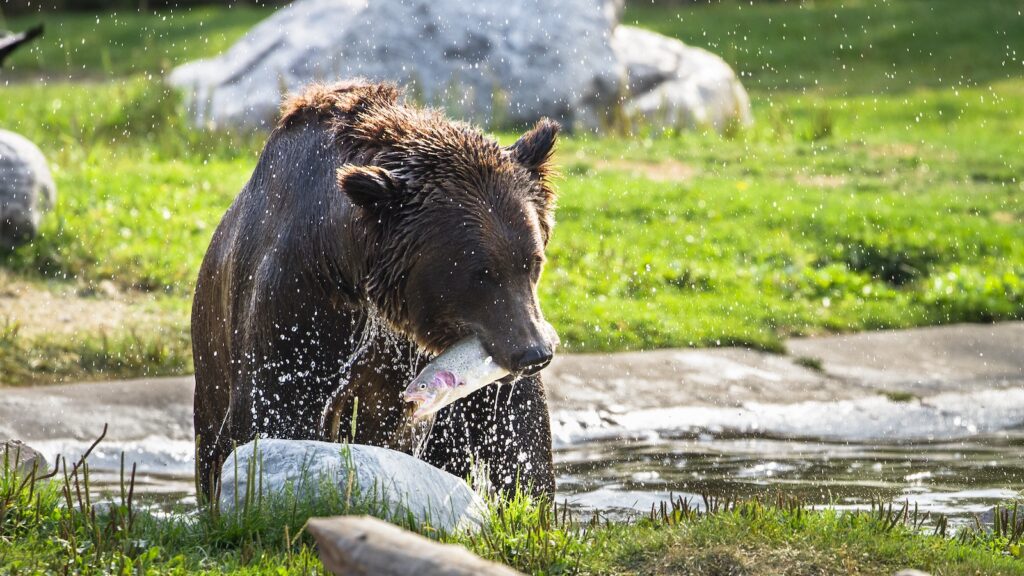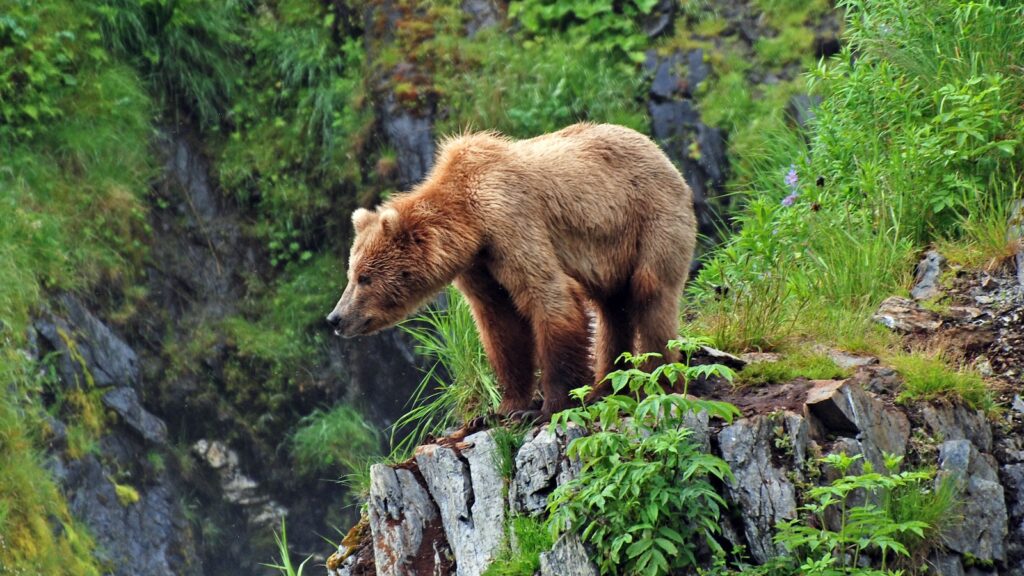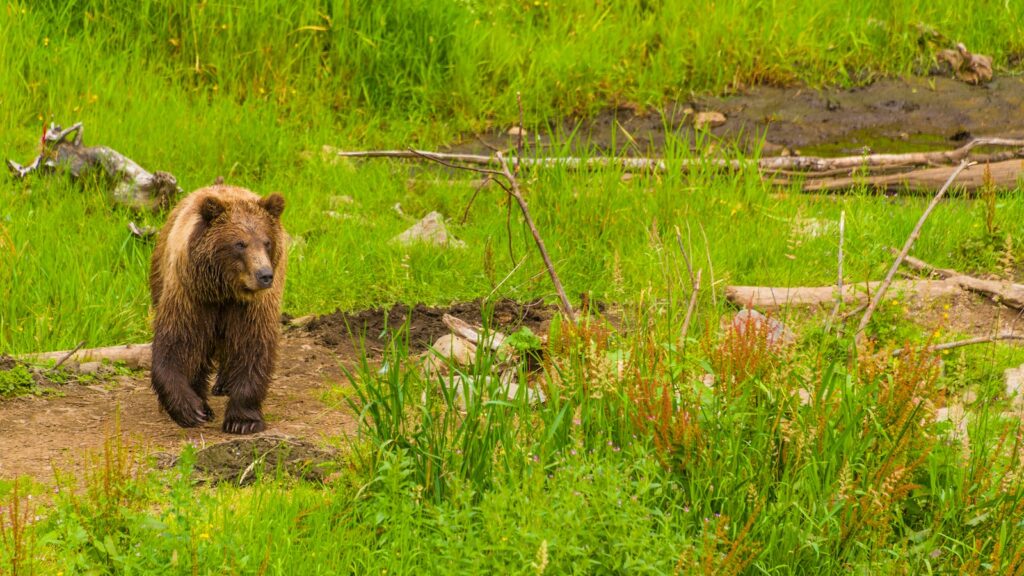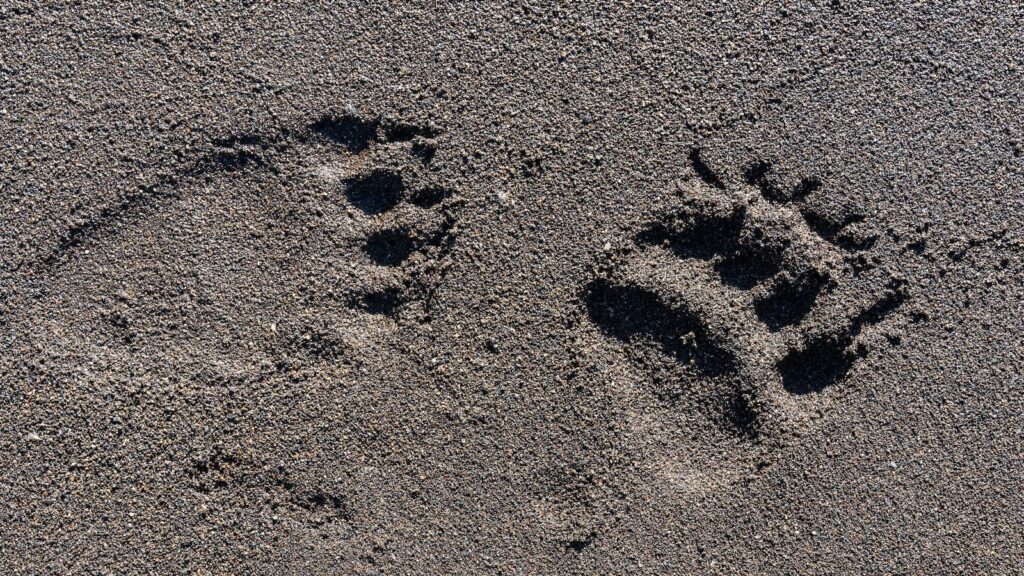The grizzly bear is universally considered the king of the animal kingdom in North America. This beautiful but fearsome predator once roamed lands that covered the entire west coast but has since been reduced to a few select areas in the lower 48.
Meanwhile, in Alaska, the Grizzly population is still healthy, which means that no matter where you are in the state, you should keep an eye out for them when traveling through the wilderness.
If you want to catch a glimpse of one of these amazing animals, then here are ten places in America where they are still found.
Yellowstone National Park, Wyoming

Not only is Yellowstone America’s first national park, but it is also one of its wildest. The park is home to the country’s largest land mammals, including moose, bison, and, of course, the grizzly bear.
It is estimated that more than 700 grizzly bears call this park home. The park averages about one bear attack per year, so pack that bear spray if you’re out hiking.
Denali National Park, Alaska

Denali National Park is home to the tallest peak in North America. It is also home to larger-than-life animals that can live mostly undisturbed in this wild part of Alaska.
With only one road in the park, the animals here, including the resident grizzly bears, can go about their day without worrying about dodging traffic or growing reliant on human food. This means you can observe them as they live in the wild from the buses that shuttle tourists through the park.
Grand Teton National Park, Wyoming

Grand Teton National Park is located just south of Yellowstone which means it shares much of the grizzly bear population that calls this part of Wyoming home. These bears are known to cover huge distances in search of food and park boundaries mean nothing to these wild animals so many of them will frequently travel between the two parks.
If you want to spot a Grizzly bear, take a drive down Moose-Wilson Road as this area is known for its frequent wildlife sightings. Look for rangers along the road, as they usually set up in places where an animal has been spotted in order to keep traffic moving.
Katmai National Park, Alaska

If you’ve ever tuned in to the famous bear webcams where you can watch them fish for salmon, then you have seen the grizzly bears of Katmai National Park. The grizzlies in this area know they can easily fatten up on salmon each summer and flock here in huge numbers to prepare for their winter hibernation.
The webcams are one of the best ways to view bears in their natural setting, but if you’re willing to make the trip up to Alaska, you can also view these same bears from viewing platforms along the river.
Glacier National Park, Wyoming

Glacier National Park covers the upper reaches of Montana, where the Rocky Mountain range passes into Canada, and, unsurprisingly, these wild lands are home to a population of over 300 brown bears.
Trails through the park will often have signs reporting recent bear sightings, so pack those bear bells and spray just in case and consider yourself lucky if you’re able to spot one of these creatures—from a distance!
McNeil River Game Refuge, Alaska

Like nearby Katmai National Park, McNeil River Game Refuge is a prime spot for viewing bears up close in their natural habitat. If you’re comfortable making the two-mile hike from camp to the bear viewing platforms, you’ll be treated to one of the most amazing sights in the natural world: grizzly bears feasting on salmon returning to spawn in the McNeil River.
Kodiak, Alaska

Of all the subspecies of brown bears, one reigns supreme in size: the Kodiak brown bear. The Kodiak bear is the largest bear species in the world, with males standing up to 10 feet tall and weighing up to 1,500 pounds!
The Kodiak brown bear only lives on Kodiak Island and the surrounding archipelago, with an estimated 3,500 of these giant animals calling it home.
Sitka, Alaska

Sitka, Alaska, is located on Baranof Island in Southeast Alaska. Baranof Island is part of the ABC archipelago (Admiralty and Chichagof make up the A & C islands), which is home to a massive population of grizzly bears.
Sitka is the only large population center on any of the islands, and residents have grown accustomed to running into these huge bears. So much so that the town even has a Facebook group to report daily sightings of these animals as they wander through town.
Selkirk Mountains, Idaho

This remote area at the far Northern end of the Idaho panhandle is home to rugged mountains and a few hardy grizzly bears who roam between the United States and Canada. While the population of brown bears in this area is low, there are just enough sightings to make folks walking through these dense forests a little nervous at the sound of a twig breaking off in the distance.
These bears will occasionally wander further south, so keep your eyes open when visiting Idaho as you might just run across an elusive grizzly.
North Cascades National Park, Washington

The North Cascades are one of the most rugged and remote stretches of mountains in the entire continental United States. While there have been no grizzly sightings on the United States side of the border, there have been a few seen on the Canadian side. Based on the known habitats in the park and the ground that these animals will cover, it is very likely that the bears call the North Cascades home on occasion.
The distances one would need to traverse to reach their likely habitat are so vast, it’s akin to a journey into the unknown. The odds of these majestic creatures ever being sighted within the park are, to put it mildly, extremely low.
